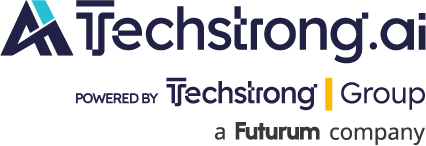
Hewlett Packard Enterprise (HPE) introduced additional features to its Juniper Networking portfolio, aimed at advancing self-driving network operations through its Mist AI platform.
The updates focus on agentic AI, which leverages autonomous workflows and digital experience “twins” to streamline IT management and improve performance across client, cloud and data center environments.
The enhancements are part of HPE’s GreenLake Intelligence strategy, which embeds specialized AI agents across IT infrastructure to reduce complexity and support real-time troubleshooting. The goal is to shift operations from reactive monitoring to proactive optimization.
“HPE Juniper Networking views agentic AI as a strategic enabler of the fully self-driving network,” explains Jeff Aaron, vice president of networking product and solution marketing, HPE. “The latest Marvis enhancements share that vision and will be compatible in the future.”
Among the new features is an upgraded Marvis AI assistant, which now offers expanded conversational troubleshooting capabilities.
By drawing from telemetry across wired, wireless, WAN, client and application layers, Marvis provides contextual responses and recommends automated remediation steps.
Aaron says, unlike traditional chatbots, Marvis uses a multi-agent framework and GenAI to interpret intent, correlate telemetry and deliver precise, actionable fixes.
“Backed by the now combined, expanded data lake from HPE Aruba and Juniper, Marvis learns from literally billions of real-world interactions and reduces resolution times by up to 85% in complex network environments,” he explains.
Marvis also leverages data from purpose-built hardware and expansive data lakes, having been honed over ten years to intelligently answer questions on par with human experts.
HPE has also extended self-driving actions within the Mist platform. The Marvis Actions dashboard can now automatically address issues such as misconfigured ports, capacity constraints and non-compliant hardware, while still allowing IT teams to maintain oversight.
“A strategic differentiator for Juniper Networking is that we know how to establish trust in our fully self-driving operations,” Aaron says.
The expanded self-driving actions dashboard offers different stages of autonomy based on the portion of the network and the comfort level of the operator, so they can turn on the actions they are comfortable with and track the results.
“Operators can start small by autonomously fixing malfunctioning APs via reboot or updating non-compliant apps, then work up to more complex capabilities,” he says.
All autonomous actions are recapped in an efficacy report shared via the Marvis dashboard – i.e. what was fixed, why it was fixed and how it was fixed – and are governed by human-in-the-loop (HITL) controls, affording IT teams complete oversight and the capacity to approve, monitor, or revert changes.
“As a result, trust and continuity are ensured in business-critical operations,” Aaron explains.
Another update centers on the company’s Large Experience Model (LEM). Built to analyze billions of data points from collaboration tools such as Zoom and Teams, LEM predicts and prevents performance issues before they reach end users.
With the addition of “Marvis Minis” — lightweight digital twins that simulate user experiences — LEM can forecast application performance without requiring live application data, and proactively adjust network conditions.
“This ‘canary in the coal mine’ approach – in our experience if something is wrong with video calls, then this concern indicates broader network issues – helps IT teams proactively resolve performance bottlenecks,” Aaron says.
Effectiveness can be measured by reductions in “bad user minutes”, faster root cause identification and improved uptime across collaboration platforms.
For the data center, HPE is introducing the Marvis AI Assistant for Data Center, which integrates with Apstra’s contextual graph database.
The assistant provides insights into network state and helps automate service provisioning. Marvis Minis are also extended into the data center to support continuous service validation and application assurance.
These new Mist capabilities sit alongside HPE OpsRamp, the company’s AIOps-powered IT operations management platform. Together, the tools are designed to provide full-stack observability and automation across hybrid, multi-cloud and on-premises environments.
“The next milestones include expanding self-driving actions in the data center and launching an on-prem LLM option to offer customers even greater control over automation,” Aaron says.

